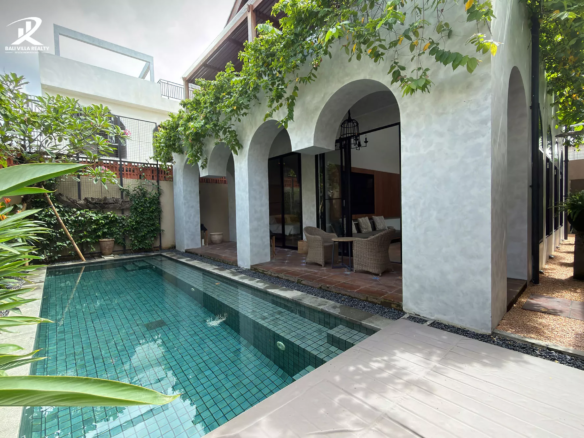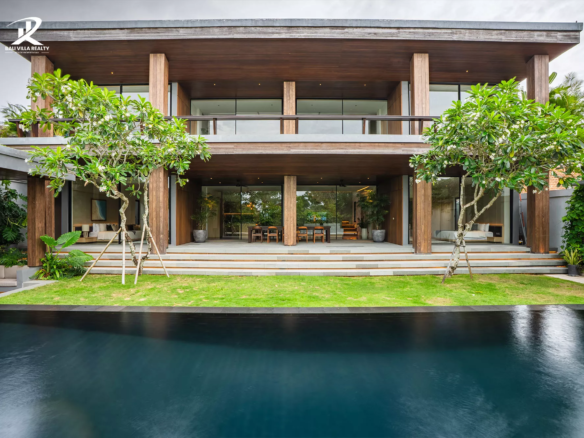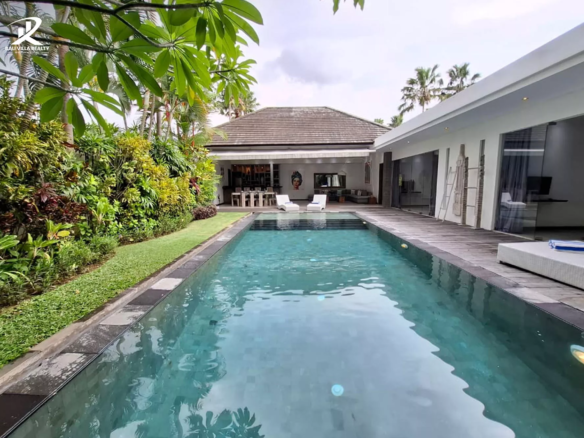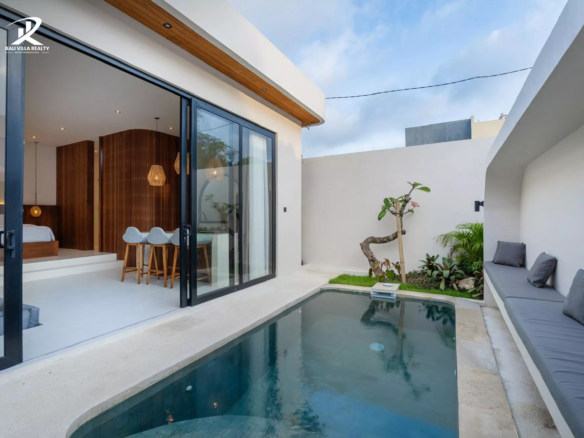Building an investment property portfolio in Bali isn’t just about buying one villa and waiting. Markets shift, demand changes, and smart investors know the key is growth.
All you need to do is simple: diversify your Bali villa portfolio. By doing this, you create multiple income streams that keep your cash flow steady—no matter what the market does.
So, how do you expand a property portfolio the right way?
In this guide, we’ll show you proven strategies to diversify, scale, and maximize returns in Bali’s fast-moving real estate market. Keep reading!

Get a Customized Investment Plan in Bali
With over 15+ years in the market, here’s what we can do for you:
- Find the best location to invest in Bali.
- Reliable guidance on Bali’s property market and laws.
- Personalized strategy to maximize returns and meet your financial goals.
Contents
Key Takeaways
- Diversify your Bali portfolio by mixing strategies (rentals, land, flips), property types (small vs. luxury villas, apartments), and locations (hotspots, emerging areas, quiet zones) to balance risks and returns.
- Spread risk by level: low-risk long-term rentals, medium-risk villas in tourist hubs, and high-risk/high-reward land or flips in developing areas.
- Growth example: starting with one $500K villa, adding $20K/year savings, you could scale to 27 villas worth $13.5M in 20 years, generating strong cash flow through reinvestment.
- Why diversify: it reduces risk, ensures steady income, maximizes opportunities in emerging areas, and keeps you flexible with market shifts.
Explore Top Deals: Available Bali Villa For Sale - Leasehold and Freehold!
1. Diversify Through Different Investment Strategies

Not all real estate investments work the same way. Some offer long-term appreciation, while others generate quick returns.
Here’s how different strategies compare:
- Buying Raw Land – Investing in land in a growing area can increase its value over time, allowing for a profitable resale.
- Commercial Land – Buying land in tourist zones for shops, cafes, or restaurants can generate high returns.
- Rental Villas – Renting out a villa to tourists or long-term tenants provides steady income. Suitable for investors looking for the fastest way to gain profit.
- Fix-and-Flip Villas – Renovating and reselling older villas can be profitable, especially in high-demand areas.
Each strategy comes with its risks and rewards. Land investments take longer to appreciate, while villas can generate immediate rental income.
Read More: 6 Smart Strategies to Boost ROI on Your Bali Investment Properties
2. Diversify by Property Type
Owning just one type of property limits your income potential. A mix of property types offers more stability.
- Small vs. Large Villas – Smaller villas rent easily with low upkeep, while larger villas attract high-end clients.
- Basic vs. Luxury – Basic villas have lower maintenance costs and appeal to long-term renters, while luxury properties attract high-paying tourists but come with higher expenses.
- Apartments vs. Standalone Villas – Bali apartments are low-maintenance and attract digital nomads, while villas offer privacy and higher rental rates.
If you’re looking for the best way to grow your Bali investment, try this method. The more variety you add, the more stable your investment becomes.
3. Diversify by Location
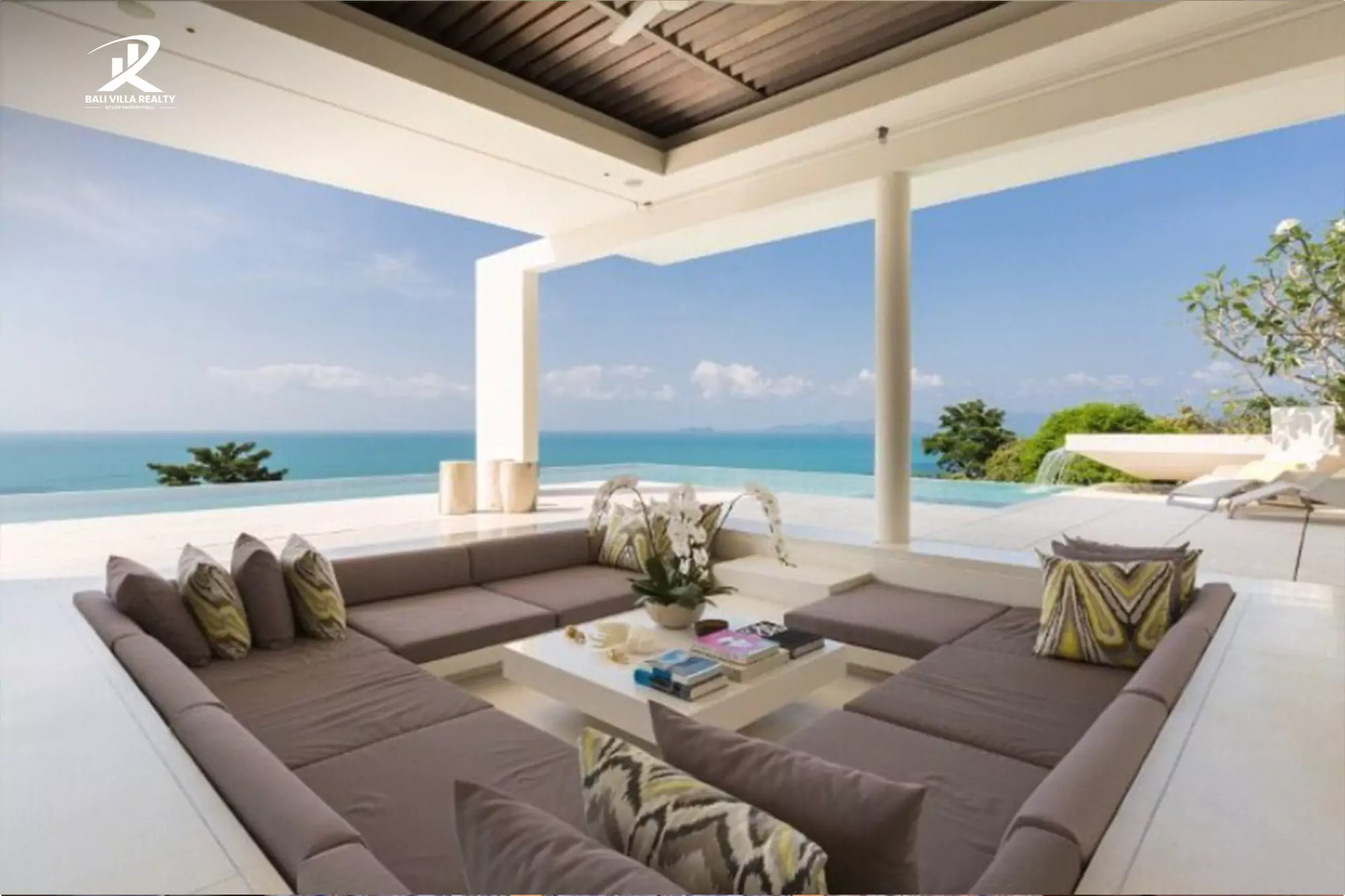
Bali’s real estate market isn’t the same everywhere. Some areas are booming, while others are still developing.
Smart property investors diversifying their investment portfolio across different locations:
- Hotspots (Canggu, Seminyak, Uluwatu) – High rental demand and tourist traffic but come with higher prices.
- Emerging Areas (Kedungu, Tabanan, Pererenan) – Fast-growing locations with reasonable prices and strong future potential.
- Quiet Areas (Ubud, Sanur) – Popular with long-term residents and expats, offering stable rental income.
Investing in different areas helps keep your income stable and reduces risks from local economic changes, new rules, or market ups and downs.
Read More: 10 Best Areas to Invest in Bali Real Estate 2025
4. Diversify by Risk Level
Not all investments carry the same level of risk. Some are safe and stable, while others offer bigger rewards but come with more uncertainty:
- Low-Risk Investments – Long-term rental properties in stable areas like Sanur or Ubud. These provide consistent income with less fluctuation.
- Medium-Risk Investments – Villas in high-demand areas like Canggu or Uluwatu. They can generate high returns but also come with competition and maintenance costs.
- High-Risk, High-Reward Investments – Buying raw land in a developing area (like Tabanan or North Bali) or flipping villas. These have huge potential but might take longer to pay off.
A smart diversification strategy balances all three, reducing risk while maximizing returns.
Why Diversification is Key to a Profitable Property Portfolio
What diversification brings to your investment and financial goals:
- Reduces Risk: If one market slows down, another might still perform well, helping balance your returns.
- Ensures Steady Cash Flow: Different property types—short-term rentals, long-term leases, and commercial spaces—help you generate income even if one sector struggles.
- Maximizes Opportunities: Investing in multiple locations allows you to tap into emerging hotspots and high-growth areas.
- Adapts to Market Trends: Bali’s rental market shifts based on tourism, economic conditions, and lifestyle trends. Owning different property types keeps you flexible.
- Attracts More Renters: A mix of properties (villas, apartments, commercial spaces) appeals to a wider range of tenants—tourists, expats, digital nomads, and locals.
Read More: Best Exit Strategies for Your Bali Property Investment
Expanding Your Bali Real Estate Portfolio: Example of Growth Scenario

Imagine you're an investor looking to build a passive income stream through Bali vacation rentals:
- You purchase a luxury villa valued at $500,000.
- With a 30% down payment of $150,000 from your savings, you finance the remaining $350,000 using an interest-only loan at 6% annual interest.
- This results in a fixed yearly interest payment of $21,000, with no principal repayment required, freeing up cash flow for portfolio expansion.
Net Operating Income (NOI)
The villa earns an initial net operating income (NOI) of $40,000 per year, based on an 8% capitalization rate. It's a common metric for rental properties, where NOI = cap rate × property value (Cap rate = NOI ÷ property value, or $40,000 ÷ $500,000 = 8%).
This NOI is the rental income after expenses like maintenance, taxes, and management fees.
Assuming the property is rented out consistently (e.g., as a high-end Airbnb or long-term lease), the NOI grows by 3% each year due to rental rate increases driven by Bali's tourism demand.
Cash Flow and Grow Strategy
To grow your portfolio faster, you also commit an extra $20,000 per year from outside income (salary, business, etc.).
Each year, your available cash is: Cash Flow = (Total NOI from all villas) – (Total Interest Costs) + $20,000 contribution
- This cash pool builds up until it reaches $150,000, enough for a 30% down payment on another $500,000 villa.
- Every new villa added generates its own $40,000 NOI (growing 3% annually from the purchase year) and adds about $21,000 in yearly interest.
This strategy works by compounding your cash flow and reinvesting consistently.
Note: This is just an example! We model this over 20 years, assuming no property value appreciation, no vacancies, stable loan terms, and identical $500,000 villas for simplicity. All figures are rounded to two decimals for clarity.
Year-by-Year Portfolio Growth
| Year | Number of Properties | Total NOI | Total Interest | Cash Flow | Contribution | Total Added | Savings End | Bought |
|---|---|---|---|---|---|---|---|---|
| 1 | 1 | 40000.00 | 21000.0 | 19000.00 | 20000 | 39000.00 | 39000.00 | 0 |
| 2 | 1 | 41200.00 | 21000.0 | 20200.00 | 20000 | 40200.00 | 79200.00 | 0 |
| 3 | 1 | 42436.00 | 21000.0 | 21436.00 | 20000 | 41436.00 | 120636.00 | 0 |
| 4 | 2 | 43709.08 | 21000.0 | 22709.08 | 20000 | 42709.08 | 13345.08 | 1 |
| 5 | 2 | 85020.35 | 42000.0 | 43020.35 | 20000 | 63020.35 | 76365.43 | 0 |
| 6 | 2 | 87570.96 | 42000.0 | 45570.96 | 20000 | 65570.96 | 141936.40 | 0 |
| 7 | 3 | 90198.09 | 42000.0 | 48198.09 | 20000 | 68198.09 | 60134.49 | 1 |
| 8 | 4 | 132904.03 | 63000.0 | 69904.03 | 20000 | 89904.03 | 38.52 | 1 |
| 9 | 4 | 176891.16 | 84000.0 | 92891.16 | 20000 | 112891.16 | 112929.68 | 0 |
| 10 | 5 | 182197.89 | 84000.0 | 98197.89 | 20000 | 118197.89 | 81127.57 | 1 |
| 11 | 6 | 227663.83 | 105000.0 | 122663.83 | 20000 | 142663.83 | 73791.39 | 1 |
| 12 | 7 | 274493.74 | 126000.0 | 148493.74 | 20000 | 168493.74 | 92285.14 | 1 |
| 13 | 8 | 322728.55 | 147000.0 | 175728.55 | 20000 | 195728.55 | 138013.69 | 1 |
| 14 | 10 | 372410.41 | 168000.0 | 204410.41 | 20000 | 224410.41 | 62424.10 | 2 |
| 15 | 12 | 463582.72 | 210000.0 | 253582.72 | 20000 | 273582.72 | 36006.82 | 2 |
| 16 | 14 | 557490.20 | 252000.0 | 305490.20 | 20000 | 325490.20 | 61497.03 | 2 |
| 17 | 16 | 654214.91 | 294000.0 | 360214.91 | 20000 | 380214.91 | 141711.94 | 2 |
| 18 | 19 | 753841.36 | 336000.0 | 417841.36 | 20000 | 437841.36 | 129553.30 | 3 |
| 19 | 23 | 896456.60 | 399000.0 | 497456.60 | 20000 | 517456.60 | 47009.90 | 4 |
| 20 | 27 | 1083350.30 | 483000.0 | 600350.30 | 20000 | 620350.30 | 67360.19 | 4 |
Key Analysis and Insights
1. Early Years (Years 1-3)
With one property, cash flow starts at $19,000 and grows modestly to $21,436 by year 3 due to rental increases.
Combined with your $20,000 contribution, savings build steadily but don't yet trigger a purchase.
2. Acceleration Phase (Years 4-10)
The second villa is acquired at the end of year 4, doubling NOI and interest from year 5 onward.
This creates a snowball effect—by year 8, you're buying your fourth property after just one year of accumulation thanks to rising cash flows.
By year 10, you own 5 properties, generating nearly $118,000 in annual additions to savings.
3. Exponential Growth (Years 11-20)
As the portfolio scales, cash flow dominates the contributions. Multiple purchases per year become common (e.g., 4 in year 19), leading to 27 properties by year 20.
Total NOI reaches $1.08 million, with cash flow at $600,350—more than enough to sustain the $20,000 contribution and fund rapid expansion.
Your ending savings of $67,360 could seed yet another purchase soon after.
Overall Portfolio Value and Equiry
By year 20, your 27 villas represent a total asset value of $13.5 million.
You've invested $150,000 initially plus 20 × $20,000 = $400,000 in contributions, and an additional $150,000 × 26 = $3.9 million in deposits from cash flow—total equity input of about $4.45 million.
With $350,000 loans per property ($9.45 million total debt), your net equity is roughly $4.05 million (assets minus loans), built largely from reinvested cash flows. Annual cash flow covers all interest and leaves substantial surplus.
Risks and Considerations
This growth strategy model assumes stable Bali tourism, no major expenses (e.g., repairs or vacancies), and unchanging property prices/loans.
In reality, factor in currency fluctuations (IDR/USD), regulatory changes in Indonesia, or higher costs. The interest-only structure keeps cash flow high but leaves principal debt intact—consider refinancing or selling to pay down loans later.
If property values appreciate (e.g., 5% annually, common in Bali), your equity would grow even faster.
Read More: Invest in Bali with High ROI for Foreigner: A Step-by-Step Guide
Conclusion: Why Successful Investors Diversify
Now you know how to scale your real estate portfolio in Bali with a clear growth example. Expanding your portfolio is the key to reaching maximum profit potential.
To wrap it up, here’s the best approach:
- Mix it up – Invest in different property types and strategies.
- Think long-term – Balance steady rental income with future appreciation.
- Spread out locations – A villa in Canggu may be hot today, but new areas could bring even bigger gains tomorrow.
We get it, managing multiple properties can feel overwhelming. The good news? You don’t have to do it alone.
If you’re ready to build a smart, balanced Bali portfolio that works for you, we’re here to guide you.
Check out our listings here or book your FREE, no-obligation consultation below.
Want to start investing in Bali property?
Have a quick chat with our real estate experts for personalized advice on your Bali investments. No commitment required.
FAQ
1. How long does it take to build a real estate portfolio?
The timeline depends on your capital, investment strategy, and the current market. Many investors manage to build a solid portfolio in about 3–5 years.
2. What grows faster, stocks or real estate?
Over the long term, stocks often provide higher returns. Real estate, on the other hand, usually grows at a slower pace but delivers steady rental income. This makes it more appealing for investors who value consistent cash flow and stability.
3. What is the 2% rule?
The 2% rule is a simple way for real estate investors to judge if a property is worth buying. According to this rule, a rental should bring in monthly rent equal to at least 2% of its purchase price.






